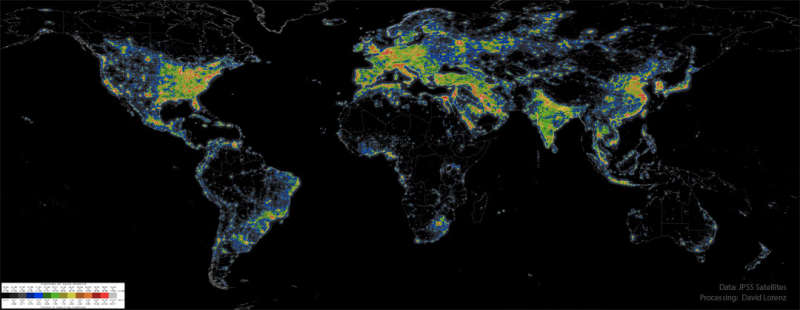
|
Credit & Copyright: Data: JPSS
Satellites;
Processing: David J. Lorenz
Explanation:
Where have all the dim stars gone?
From many places on the
Earth including major cities,
the night sky has been reduced from a
fascinating display of
thousands
of stars to a diffuse glow through which
only a few stars are visible.
The featured map indicates the relative amount of
light pollution that occurs
across the Earth.
The cause of the pollution is artificial light reflecting off
molecules and
aerosols in the atmosphere.
Parts of the Eastern
United States and
Western Europe
colored red, for example, have an
artificial night sky glow
over ten times that of the natural sky.
In any area marked orange or red, the
central band
of our Milky Way Galaxy is
no longer visible.
The International Dark Sky Association suggests
common types of fixtures that provide
relatively little amounts of
light pollution.
Light Up Your Internal Night Sky:
Random APOD Generator
|
January February March April May June July August September October November December |
| ||||||||||||||||||||||||||||||||||||||||||||||||
NASA Web Site Statements, Warnings, and Disclaimers
NASA Official: Jay Norris. Specific rights apply.
A service of: LHEA at NASA / GSFC
& Michigan Tech. U.
Based on Astronomy Picture
Of the Day
Publications with keywords: light pollution
Publications with words: light pollution
See also:
